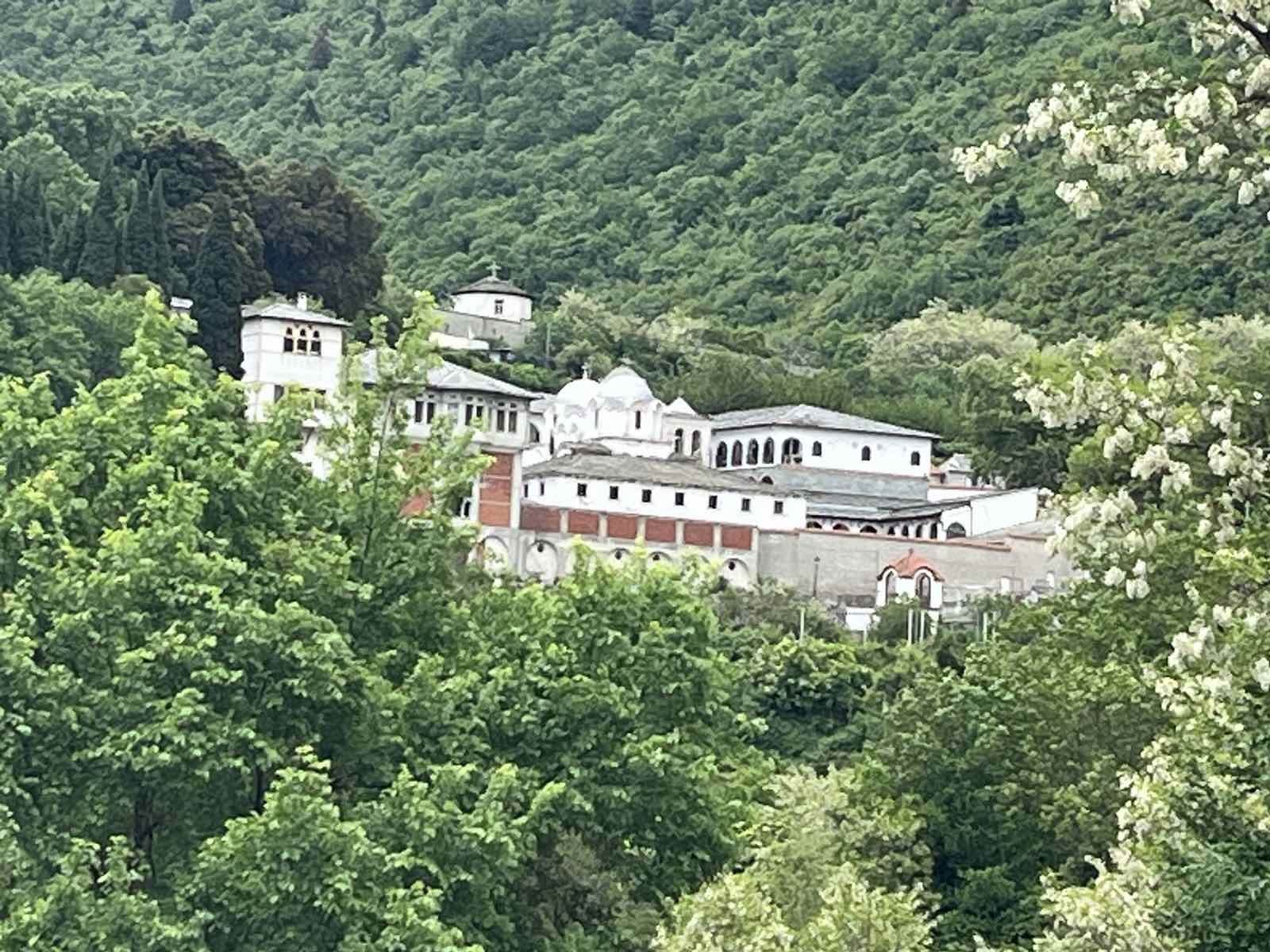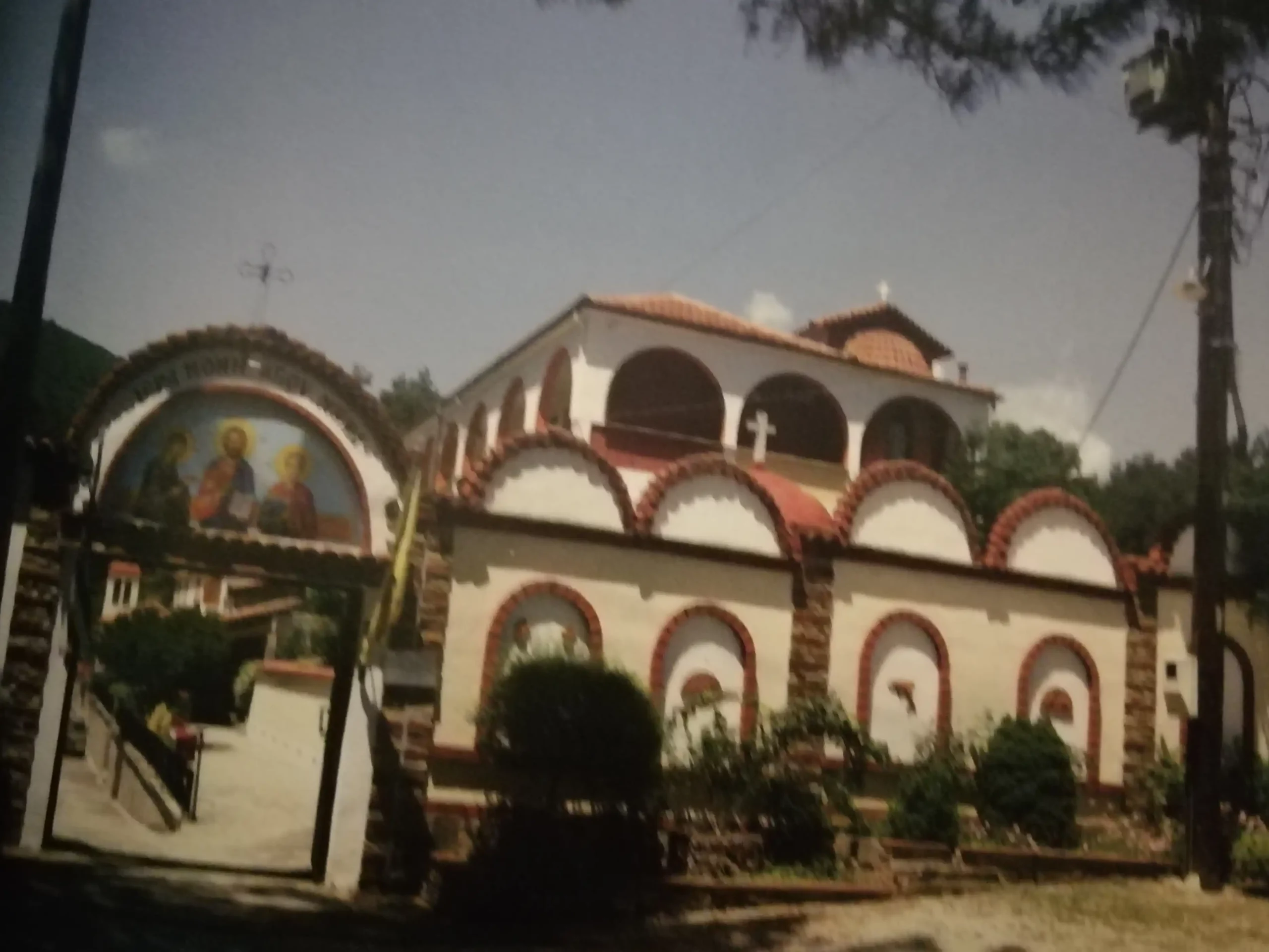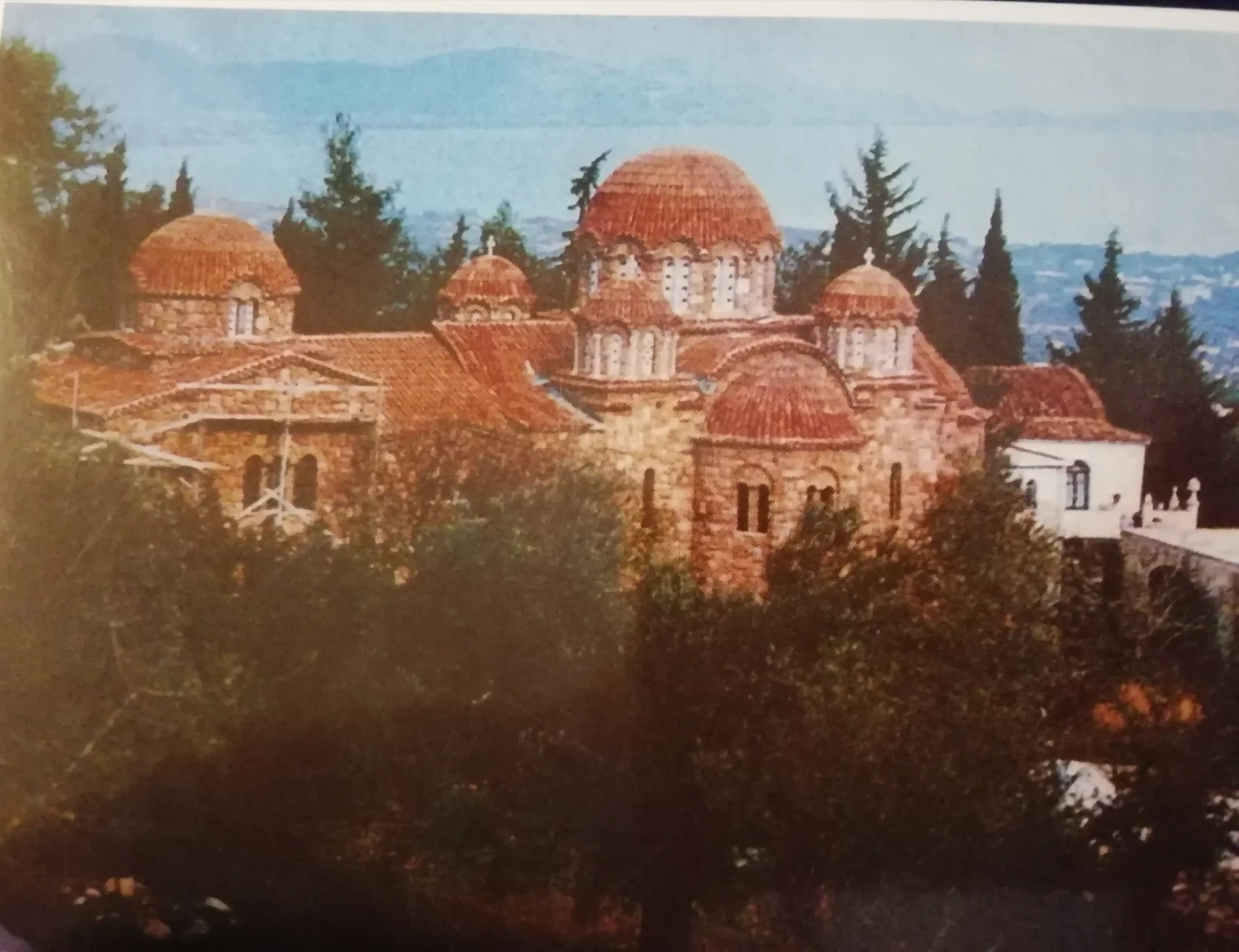In Paggeon Mountain
The Holy Monastery of «Panagia Eikosifinissa» is situated on Mount Paggeon,
753 metres above sea level. Initially, the site was founded for a male monastic
community and remained as such until 1965. The original foundations, however, are
said to date from as early as 451 AD.
It was through an angel that Saint Germanos, an early desert Father, received
instruction from the Blessed Virgin to found the monastery on its present location. At
the time of the revelation St Germanos was sojourning by the river Jordan in an oasis.
The oasis was said to have been formed by twenty (in Greek «eikosi») palm trees
(«phoenix»), and thus some say that in remembrance of this location he named the
monastery «Eikosifinissa».
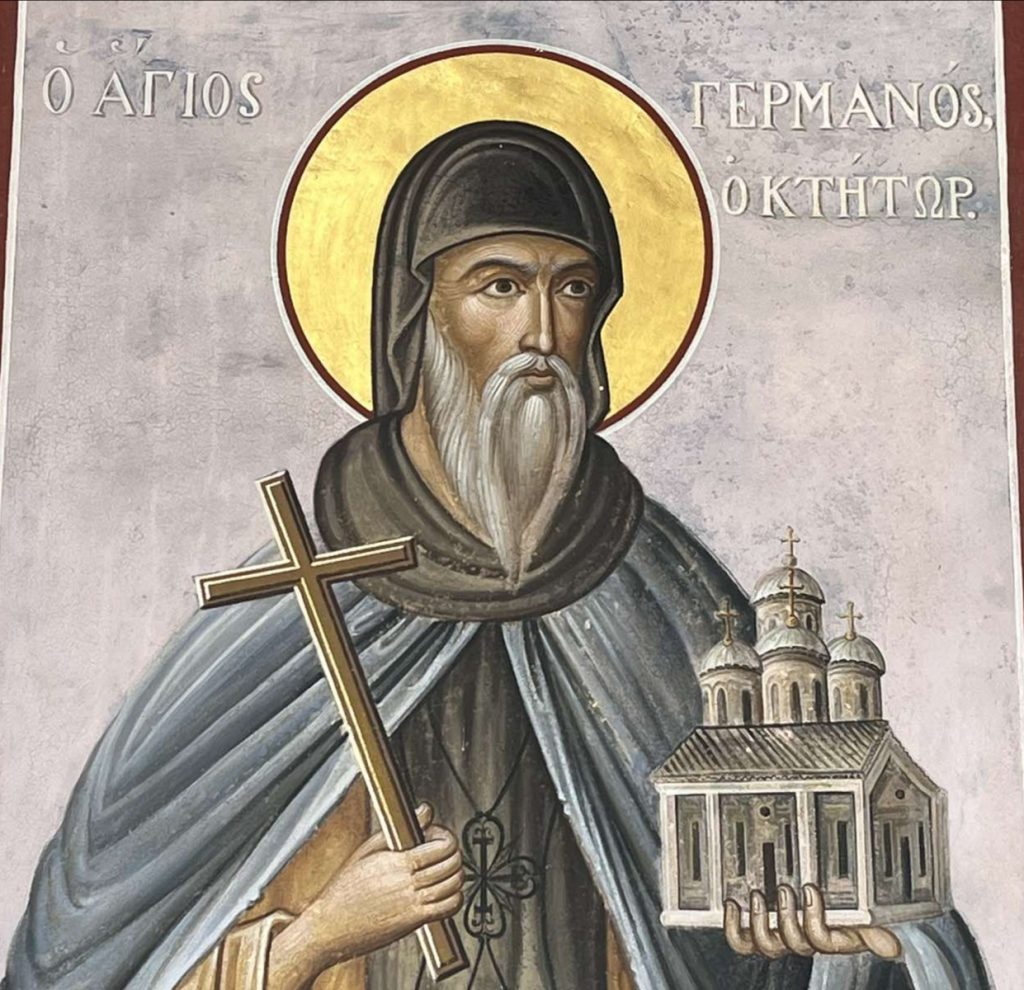
It was through an angel that Saint Germanos, an early desert Father, received
instruction from the Blessed Virgin to found the monastery on its present location. At
the time of the revelation St Germanos was sojourning by the river Jordan in an oasis.
The oasis was said to have been formed by twenty (in Greek «eikosi») palm trees
(«phoenix»), and thus some say that in remembrance of this location he named the
monastery «Eikosifinissa».
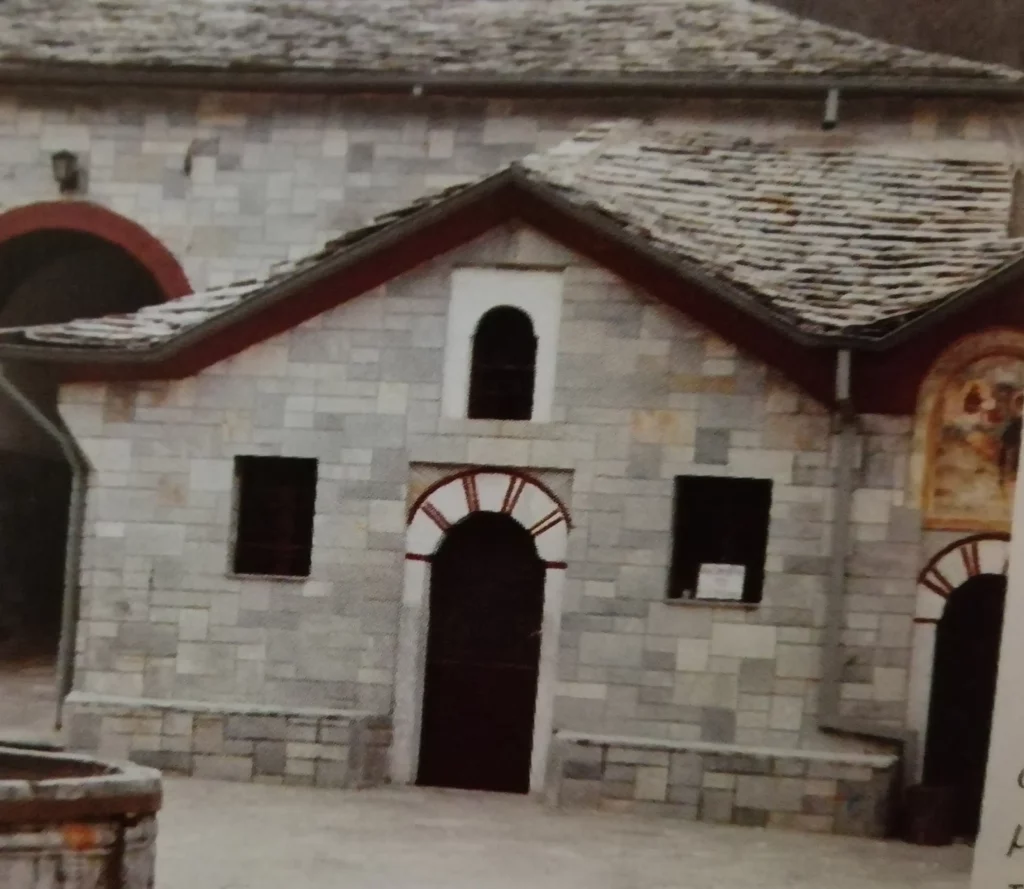
Having reached the site revealed to him, St Germanos set about building the
monastery. However, on commencing his works he was greatly saddened to find that
there was no natural source of water. Whilst complaining of this to the Mother of God,
a blackbird (in Greek «kossifos») appeared to him and led him to a nearby spring. It is
from this story that another version of how the monastery gained its name (kossifos ->
Eikosifinissa) came into existence. At a later date a chapel dedicated to St Barbara
was built above this ever-flowing miraculous spring.
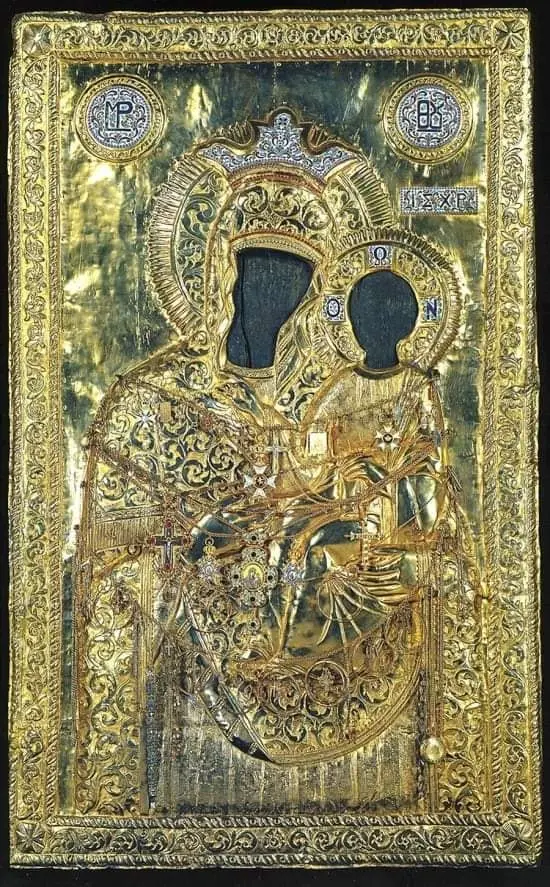
The most commonly told version concerning the derivation of the monastery’s
name is connected with the monastery’s icon of Panagia (Mother of God)
«Eikosifinissa». This «not-painted by hands» icon is renowned for the great number of
miracles that the Mother of God works through it.
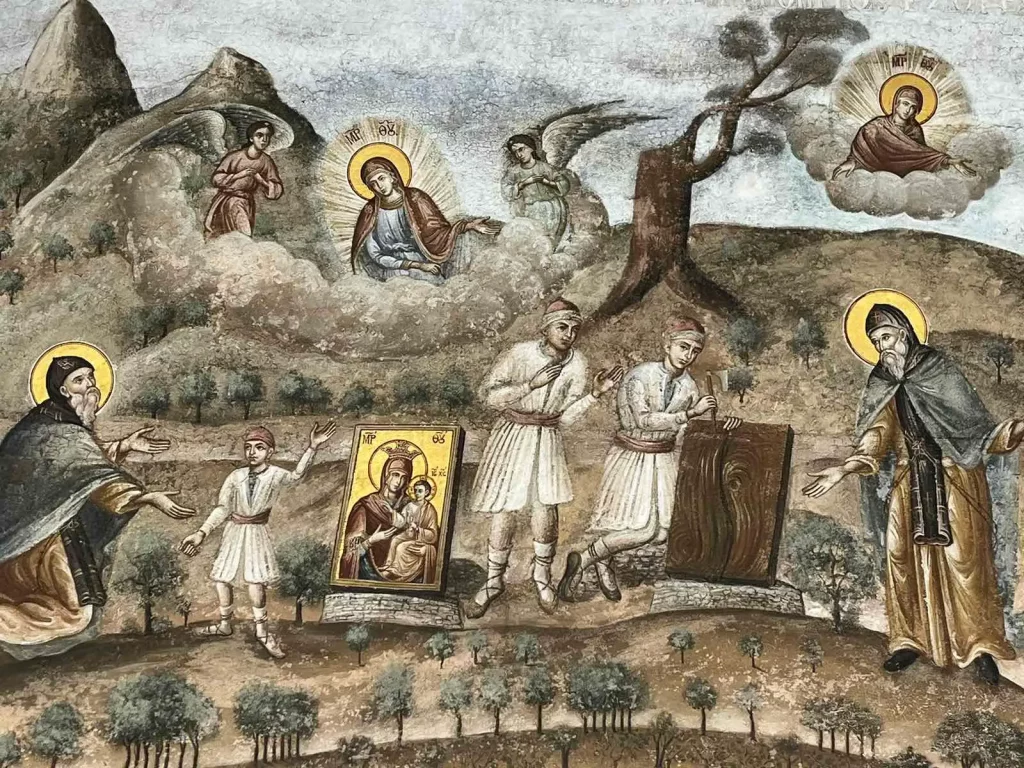
The story goes that when St Germanos chose and prepared an icon board for
which he intended to paint upon the icon of the Mother of God, the board split in two
and was thus rendered useless. Due to the time and effort the Saint had spent to find a
suitable board he was greatly disheartened at this occurrence. At that moment, the
Mother of’God appeared holding the Christ Child and their images were instantly
imprinted upon the broken board which in turn began to radiate a brilliant red (in Greek
«phoenissoun») light. Therefore, it is very likely that the name derives from the words
Eikon (icon) and phoenissousa -> Eikon phoenissa -» Eikosifinissa.
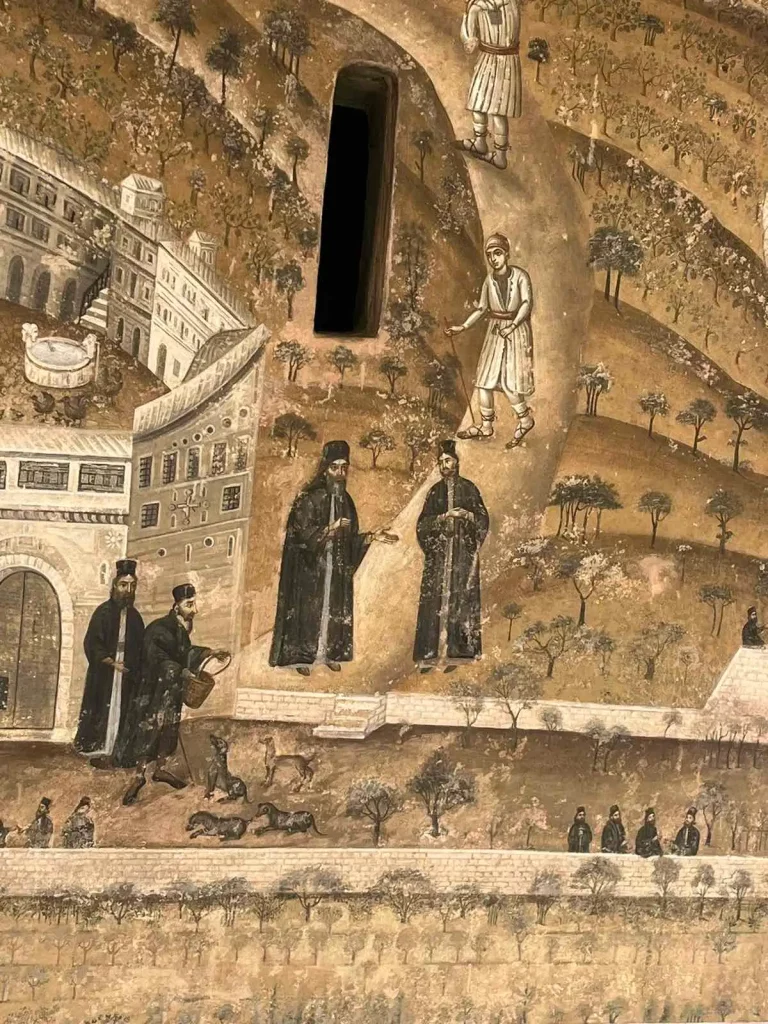
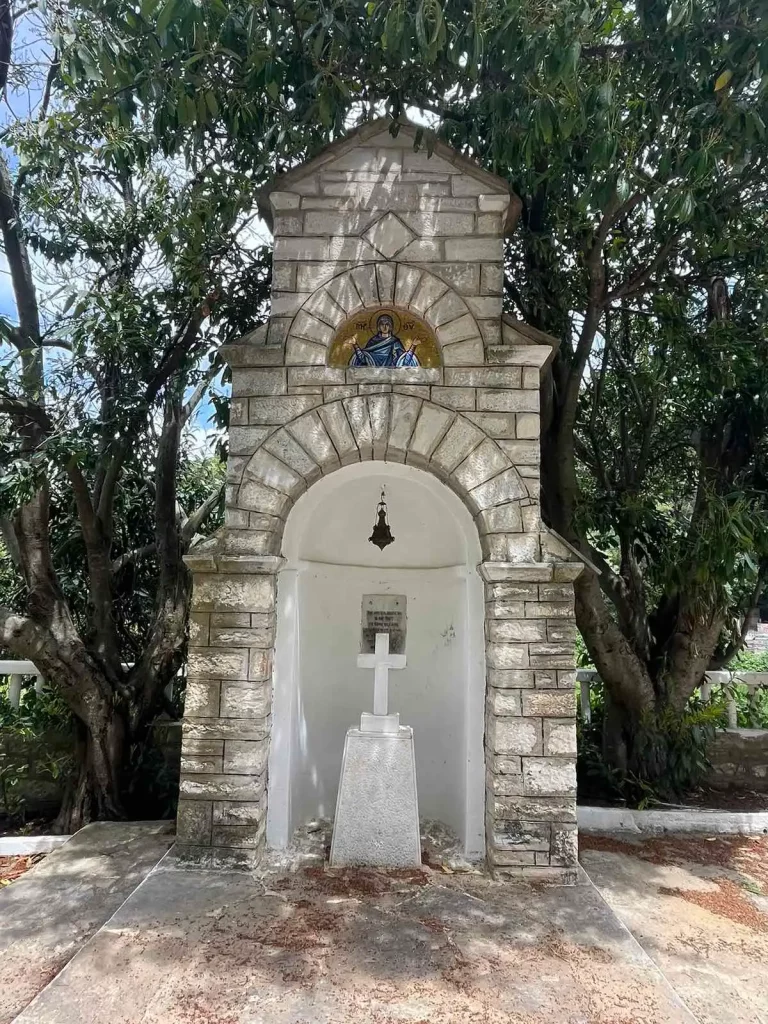
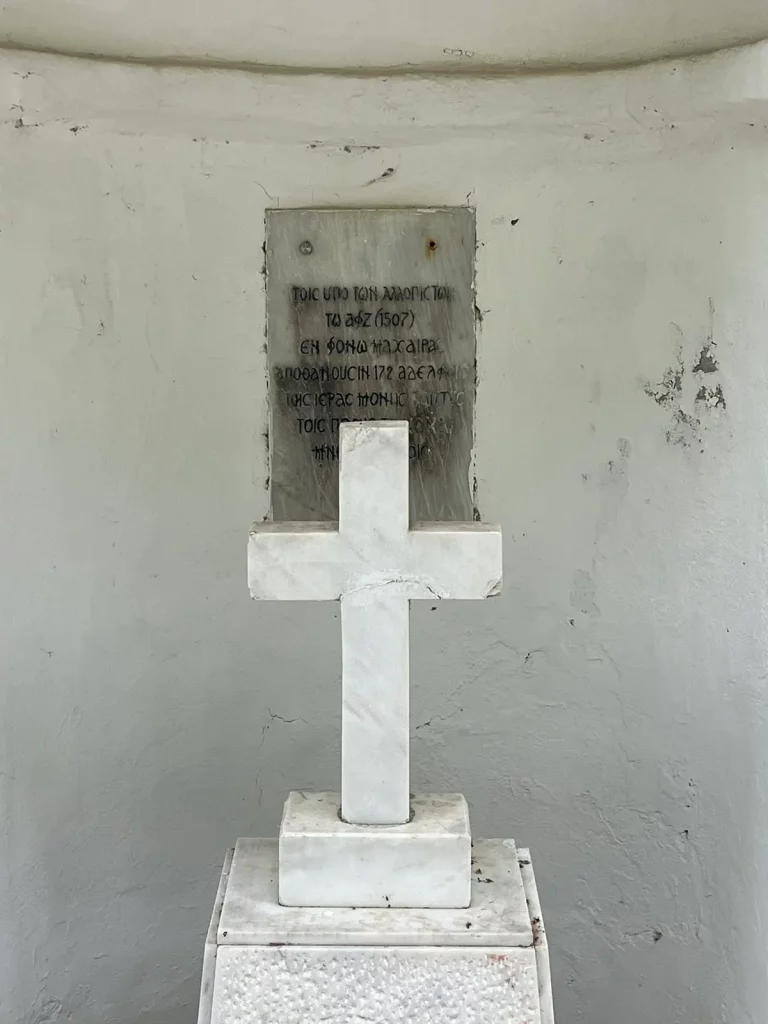
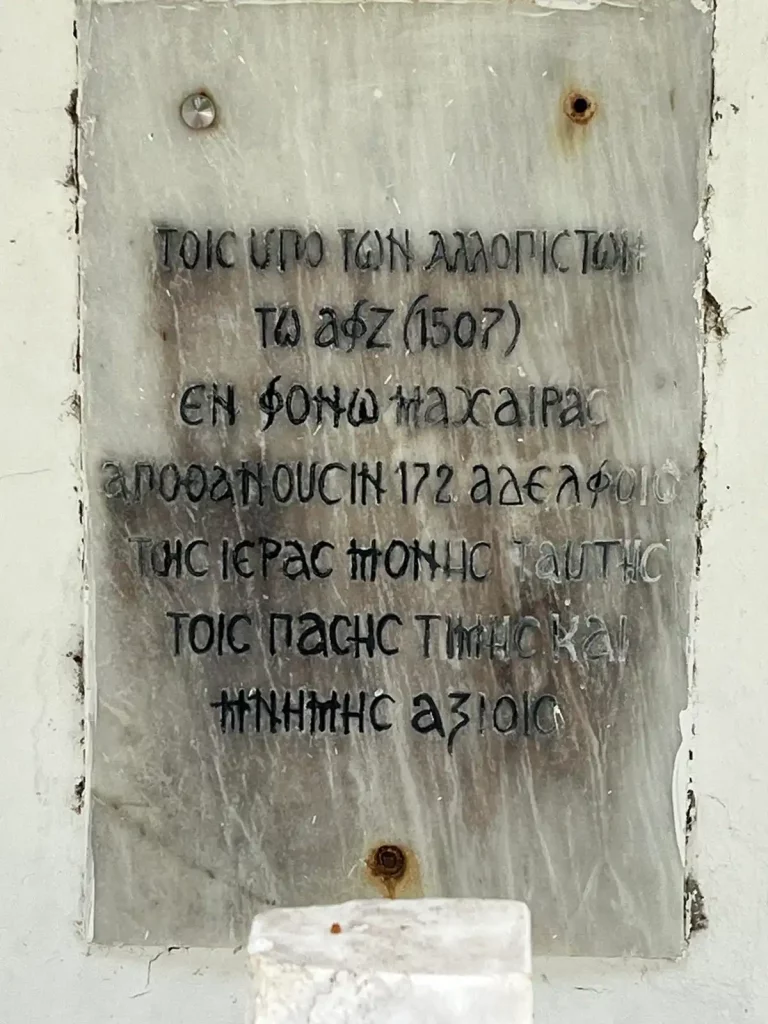
Apart from the rebuilding of the main church («Katholikon») in the 11 th century
the monastery has seen many other structural changes, one of the most important
periods in the history of the monastery being towards the end of the 15 ‘ century. It was
during this era that St Dionysios restored many of the older buildings and constructed
new ones. For this reason he is esteemed by the monastery as being one of its co-
founders.
In 1507 the monastery housed 172 monks who under the orders of the
province’s Turkish governor were all martyred for their love of the church and their country. A monument dedicated to the memory of these martyrs can be found by
the main entrance to the monastery.
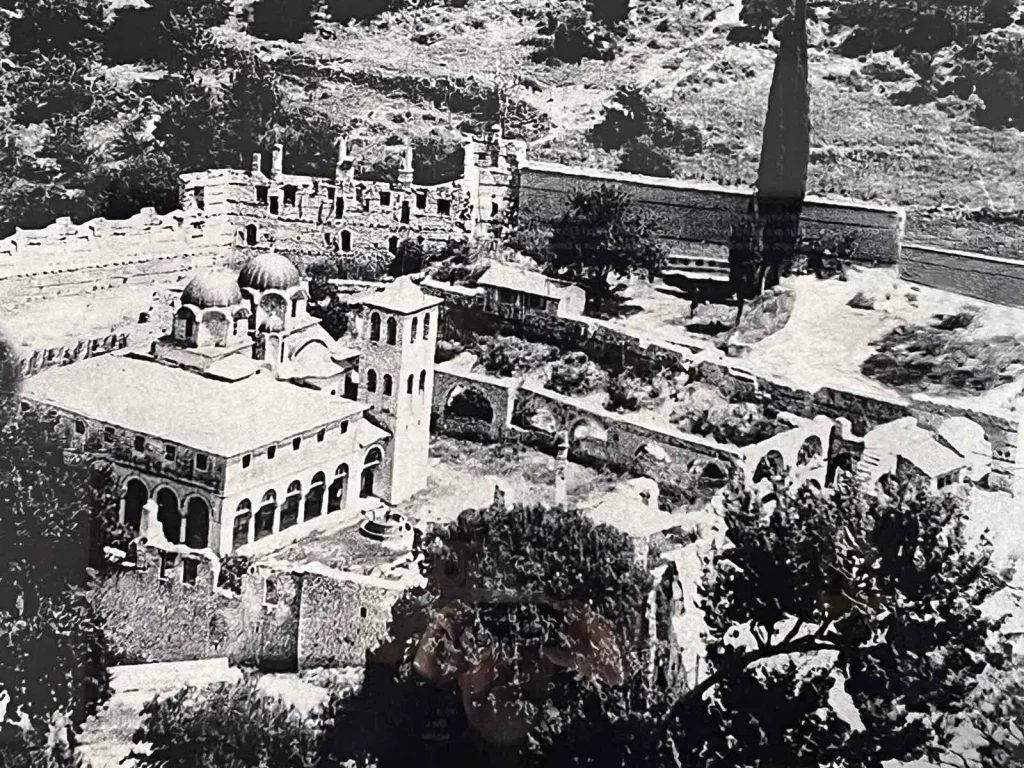
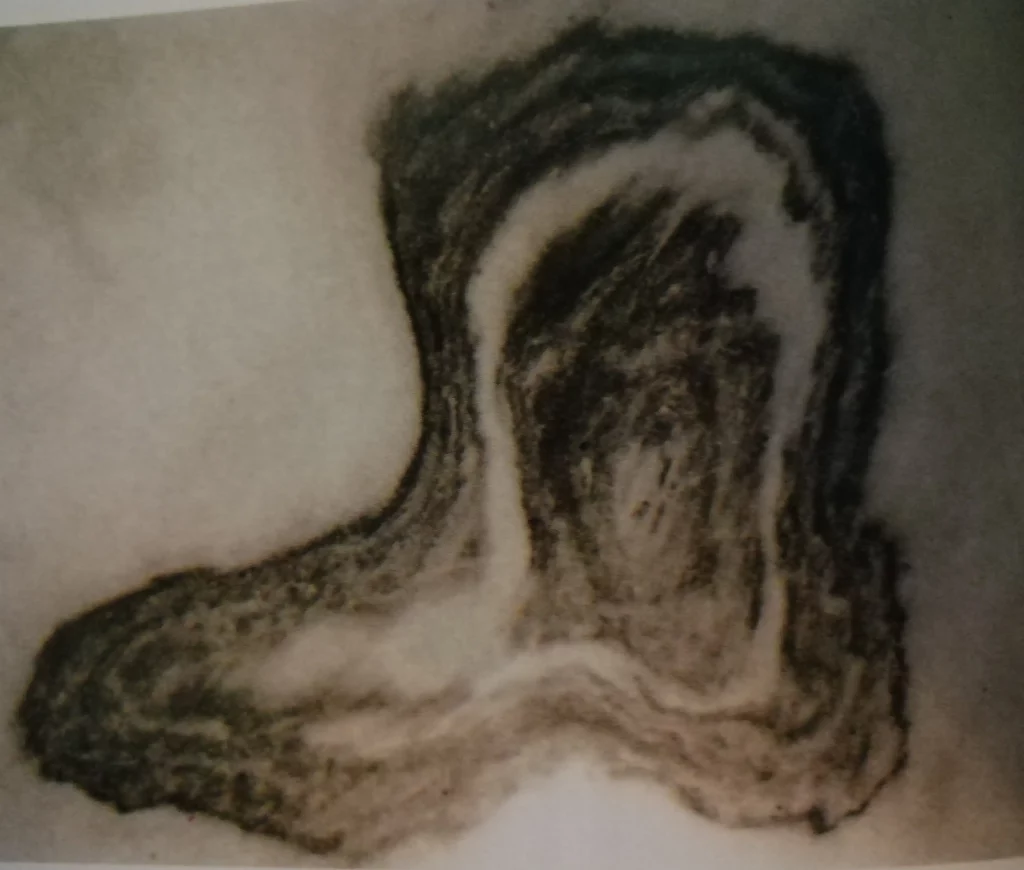
After this tragic event the monastery once again saw a flourish in numbers.
However tragedy again struck in 1829, when an earthquake destroyed the entire main
church, save for the sanctuary and the gilded iconostasis. The hand-carved wooden
iconostasis dates from the 18 th century and depicts many biblical scenes.
In the 20 th century the monastery saw two more major catastrophes. The first
occurred in 1917 when Bulgarian raiders pillaged the greater part of the monastery’s
treasures. According to verbal tradition, during this raid a Bulgarian officer attempted to
profane the icon of Panagia Eikosifinissa. On approaching the icon an unseen force
threw him back with such might that he instantaneously died. At the place where he fell,
his boot and his pistol can be seen to have left significant imprints on the marble floor.
The monastery was once again crippled in 1943, however this time by a great
fire. The only building that survived was the main church, which although being
entirely engulfed by flames, miraculously suffered no significant damage.
Another testimony to the grace endowed upon the monastery are the small
cypresses which for years of their own accord have been growing on the main church’s
northern dome.
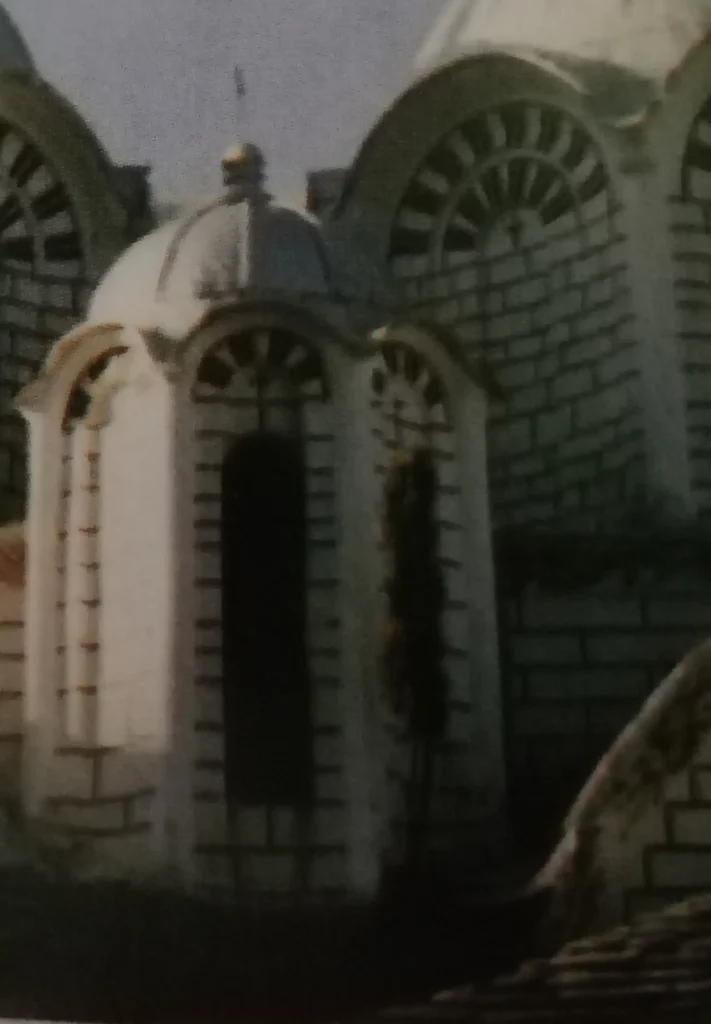
In 1965, under the aid and blessing of the present Bishop of Drama,
Metropolitan Dionysios, the monastery was re-established as a convent. Today,
Panagia Eikosifinissa is a place where pilgrims come to pay homage and ask
intercession of Our Most Holy Lady and Ever-Blessed Virgin Mary, by whose grace this
holy monastery was first established.
